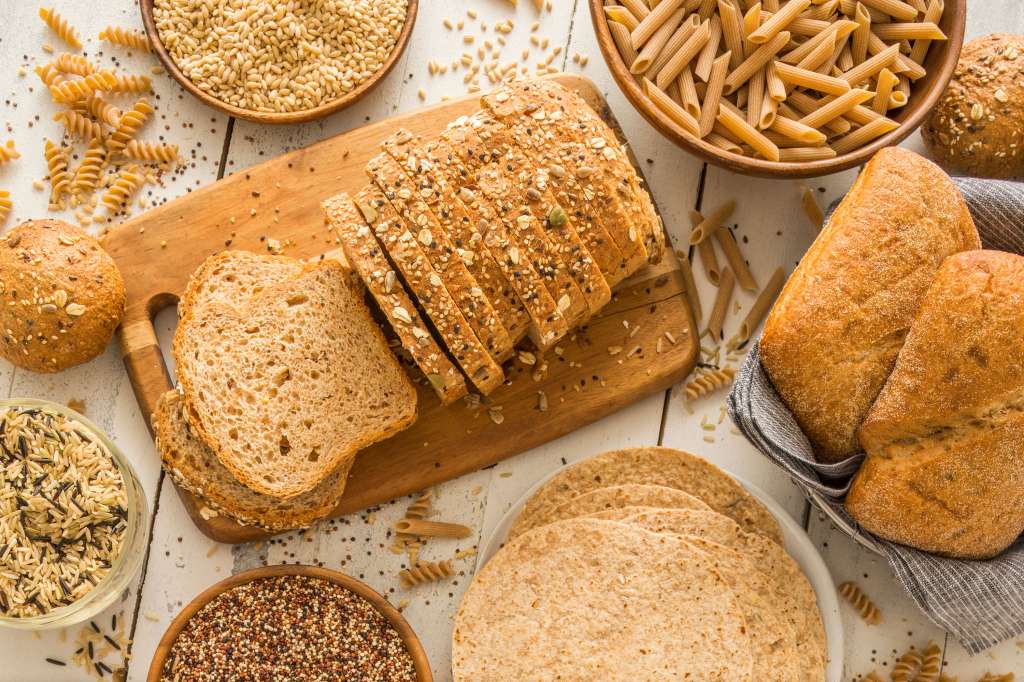(CNN) — Eating at least three servings of whole grains each day can keep your weight, blood pressure and blood sugar levels in check as you age, a new study found.
“Eating whole-grain foods as part of a healthy diet delivers health benefits beyond just helping us lose or maintain weight as we age,” said senior author Nicola McKeown, a scientist on the nutritional epidemiology team at the Jean Mayer USDA Human Nutrition Research Center on Aging at Tufts University, in a statement.
“These data suggest that people who eat more whole grains are better able to maintain their blood sugar and blood pressure over time,” McKeown said. “Managing these risk factors as we age may help to protect against heart disease.”
In the study, published Tuesday in The Journal of Nutrition, researchers followed 3,100 people in their 50s at regular four-year intervals for 18 years, thus allowing researchers to track changes in eating habits over time.
Compared to people who ate less than one-half serving of whole grains, people who ate three or more servings daily over time had a lower average increase in waist size (0.5 inch instead of 1 inch) and a greater decline in triglyceride levels during each four-year period.
A single serving of whole grains is one slice of whole-grain bread, or a half cup of oats, or a half cup of brown rice.
In addition, average increases in blood sugar levels and systolic blood pressure (the top number,which measures the force your heart exerts on artery walls each time it beats) were also lower in people who ate more whole grains, despite any increase in waist size.
Why whole grains?
Eating the whole grain, as our ancestors used to do, provides a host of benefits to the body that are lost when the grain is processed.
The flour in white breads, bagels, pastries and pasta has lost the grain’s fiber-rich outer layer during the refining process. Also lost is the inner germ layer that’s full of antioxidants, magnesium, potassium, vitamin B and healthy fats. Only the starchy part of the grain is left.
But keeping the grain whole can increase dietary fiber and “have a satiating effect,” thus reducing calorie intake, while “the magnesium, potassium, and antioxidants may contribute to lowering blood pressure,” said first author Caleigh Sawicki, who was a doctoral studentat the Gerald J. and Dorothy R. Friedman School of Nutrition Science and Policy at Tufts University when she worked on the study.
“Soluble fiber in particular may have a beneficial effect on post-meal blood sugar spikes,” said Sawicki, currently a postdoctoral research fellow at Brigham and Women’s Hospital at Harvard T.H. Chan School of Public Health, in a statement.
However, the “average American consumes about five servings of refined grains daily, much more than is recommended, so it’s important to think about ways to replace refined grains with whole grains throughout your day,” McKeown said.
“For example, you might consider a bowl of whole-grain cereal instead of a white flour bagel for breakfast and replacing refined-grain snacks, entrees, and side dishes with whole-grain options,” she added. “Small incremental changes in your diet to increase whole-grain intake will make a difference over time.”
Ancient grains
In the US and Europe, ancient grains like protein-rich quinoa, farro and amaranth have been growing in popularity for the past decade and a half. These grains have remained largely unchanged over the past several hundred years, according to the Whole Grains Council.
Try ancient grains as a base for a grain salad at lunchtime or as a side at dinner. Less commonly known ancient grains include iron-rich teff, which has a distinctive nutty flavor but can be pricier than more common grains like oats. You can experiment with these grains by incorporating them in small amounts into your morning bowl of oatmeal.
The-CNN-Wire
™ & © 2021 Cable News Network, Inc., a WarnerMedia Company. All rights reserved.

